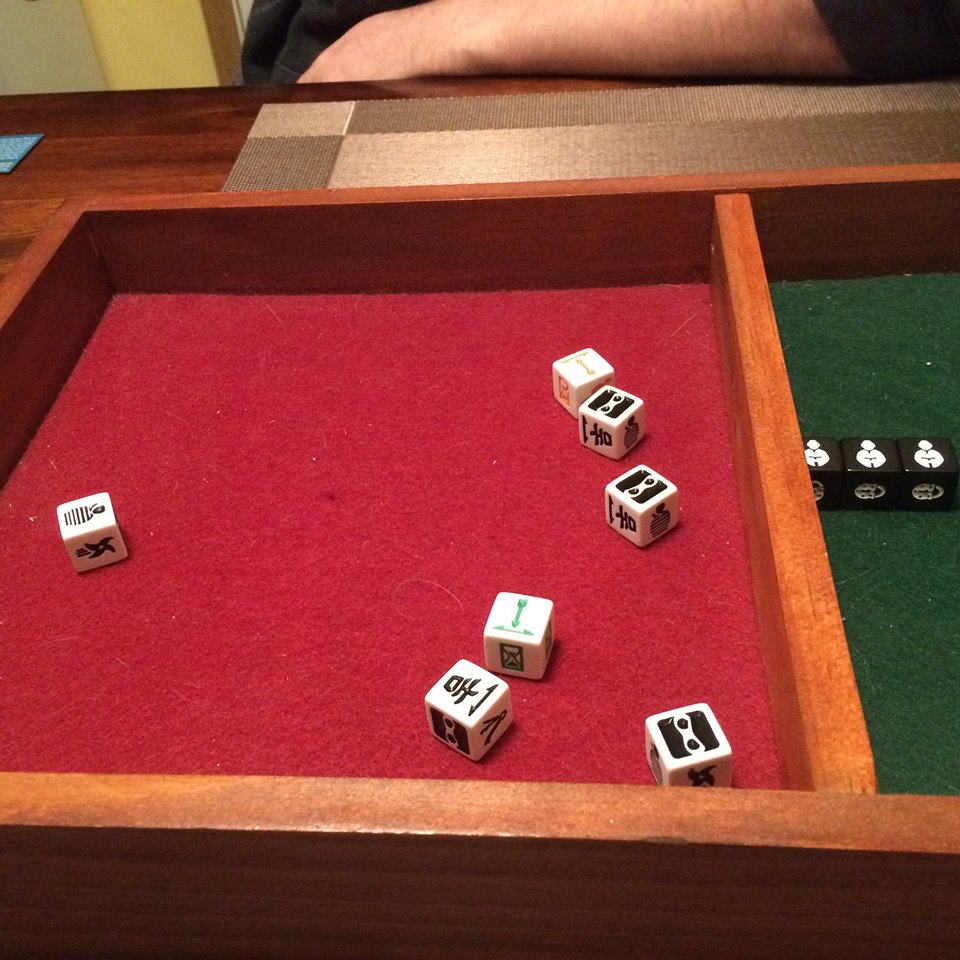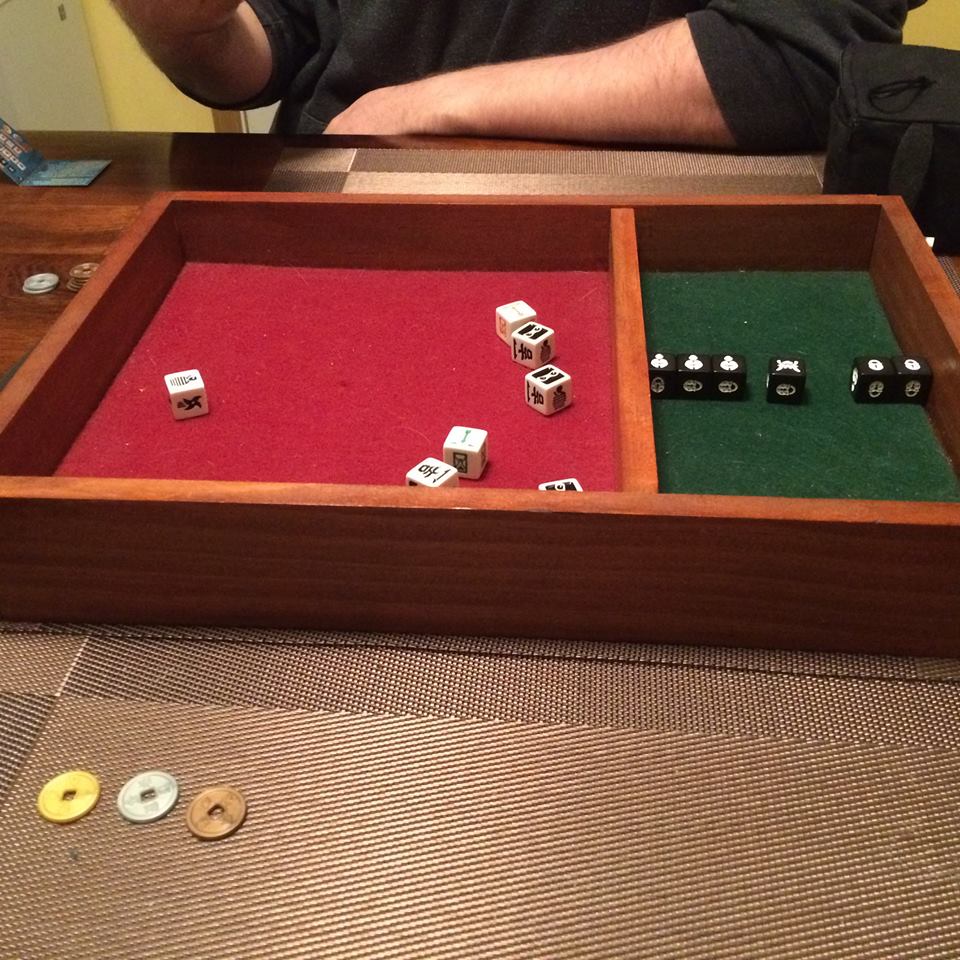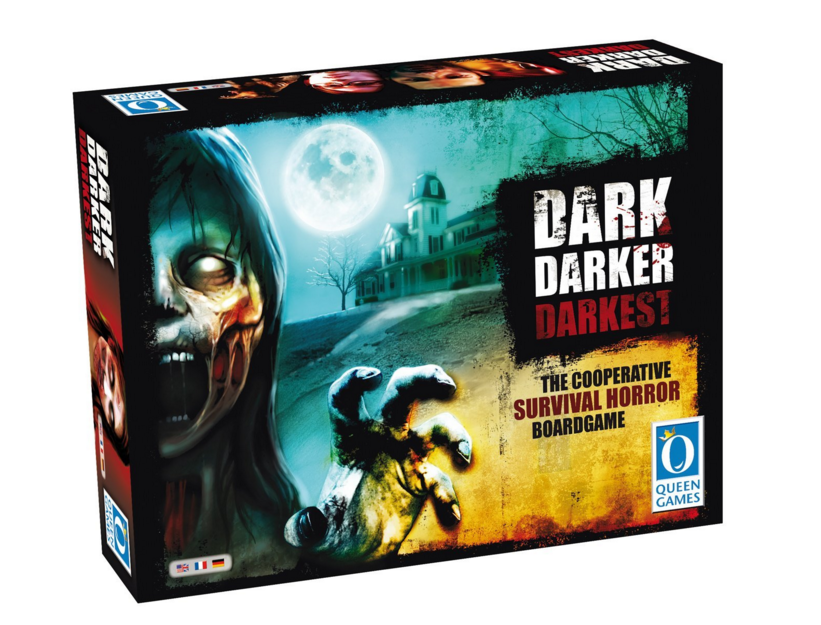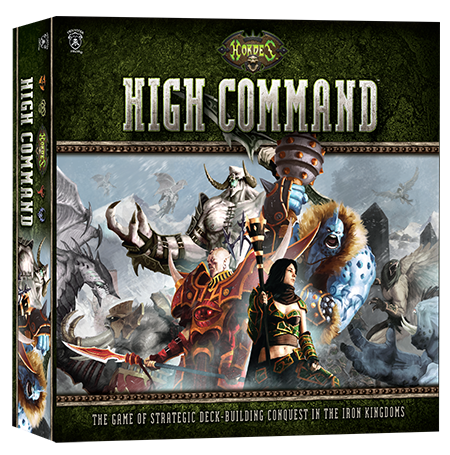Have you ever argued with your friends about who the greatest ninja is? Really, who in geekdom hasn’t?
With Greenbriar Games’ Ninja Dice, you can settle the question for all time, or until the next time you need a fast-paced party game. The starter set includes six black house dice, five white skill dice and four threat dice in a squared zippered pouch that looks like a ninja’s face.
As you might expect from the name, Ninja Dice is a dice game. Intended for two to four players, the game combines the push-your-luck aspect of games like Zombie Dice with a mechanic unique to the game: where your dice land impacts game play. The game lasts for three rounds, so it’s quick to play, but not quick to master.
Another unique aspect of the game is that all the players are involved in almost every roll of the dice.
Ninja Dice Game Play
Focusing on the concepts of the great houses of Japan and the use of ninjas to defeat one another, the game starts with a non-active player creating the house that the first player must attack. In the basic version of the game, the first house is created using four of the black house dice. The symbols on the house die represent the things that ninja must get past if he is going to loot the house and make the money. Having the most money at the end of three turns wins you the game, so ninjas are definitely in it for the cash.
Ninjas have five skill dice to help them overcome the obstacles that the house presents, so you’d think that overcoming a four dice house would be easy. And sometimes it is, but the house dice are tricky and can make it nearly impossible to beat if the house creator rolled well. All the dice in Ninja Dice are six-sided. The six sides of the house dice are: lock, double lock, residents, double residents, guards and double guards. And your poor ninja has to defeat each icon on the House dice, not each die.
For example, if I roll four double locks on the four House dice, the Ninja will need eight lock pick symbols to successfully defeat the house. And he doesn’t get double everything on his skill dice. In fact, he doesn’t get double anything! The six sides of the skill dice are: lockpick, sneak, kill, fortune, catch and wild.
The lockpick overcomes locks and the sneak or kill can be used against residents or guards, but you’ll lose a chance at extra gold if you kill the residents and you have to treat each matching icon of the house the same way. So, if you have three guards, you can kill them all or sneak past them all, but you can’t kill one and then sneak past the others. The wild symbol can be anything else on the dice and the fortune is essentially a multiplier (times four) that can be added to any other dice symbol. So with five dice to defeat eight locks, you would need at least two fortunes and two lockpicks.
The catch symbol is to help your ninja against the other players, not the House.
At the same time the first player is rolling his skill dice, each other player in the game is given a Threat die to roll. All the dice are rolled simultaneously because how they land impacts how they can be used. The Threat dice have two each of a catch, an arrow and an hourglass. When they roll an arrow, the direction of the arrow determines which other dice, and therefore other players, are affected. If player one rolls a catch, he can’t be targeted with an arrow, no many how many are rolled. But if the arrow points in his direction and he has no catch, the other player steals a gold coin from him. Any player who rolls a catch cannot have a gold stolen from him. Fortune dice also have directional arrows indicating which other dice they can affect.
When a Threat die rolls an hourglass, it indicates that time is passing for the Ninja to get out of the house. The Threat die locks in and stays there until the ninja defeats the house, decides to quit while he’s ahead and leaved with a partial defeat of the house, or all four Threat dice lock in. When that happens, the ninja must flee from the house at once and gets no coins at all for the turn.

The first player rolls his skill dice and his competitors roll their Threat dice. Once the Threat dice are resolved, the first player decides which, if any, of his skill dice he wants to use to defeat the house. He may re-roll the skill dice as many times as he likes, but each time, the Threat dice are rolled as well. The player gets one coin for each die of the house he defeats, and an additional coin if he defeats the house without killing any residents. He also gets a bonus if he defeats the entire house.
At any point along the way, the player can opt to take just the coins for the dice he has defeated and end his turn, but if all four hourglasses show up before he takes the coins and runs, he gets none at all.
The second round gets more difficult with a five dice house and in the final round all six House dice are used to construct the target. In the first expansion for the game, players are given the option to add a historical scenario, provided on card add-ons to the game, in an attempt to earn more coins. These scenarios may added additional features in the house to overcome, like adding another guard or two, or may reduce the number of skill dice the ninja can access.
Final Analysis
We decided to break out a dice tray when we played this game so that it was easier to determine which dice affected each other. We played two rounds of the basic game and two rounds with the expansion. The expansion makes actually defeating the house very difficult, changing the emphasis of the game.
In the early games, both of us focused on defeating the house and coins stolen from the other player were mostly unimportant. In the later games, with the cards in play, neither of us was consistently able to defeat our houses, so stealing coins from one another became much more important.
This is an awesome little beer and pretzels game. When you’re sitting around with friends and want something to do that requires a bit of strategy but not too much thought, this is a great game option.





